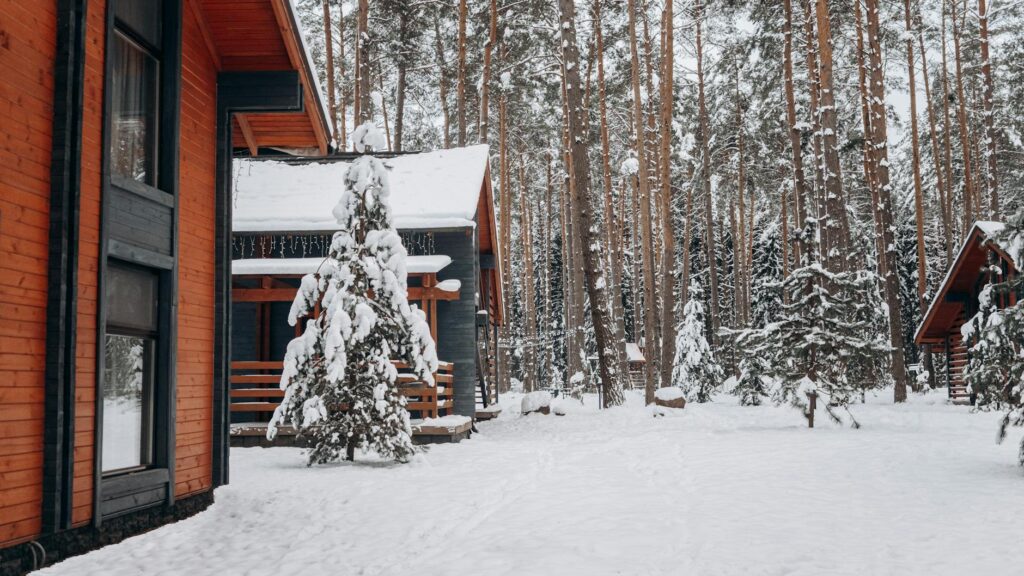Key Takeaways
- Sustainable chinking protects log homes from environmental and structural damage while minimizing ecological impact.
- Eco-friendly options include acrylic-based, natural fiber, and recycled content chinking materials.
- Best preparation, application, and maintenance practices can extend the life of your chinking and log home.
- While initial costs may increase, sustainable chinking provides long-term savings and health benefits.
Table of Contents
- Understanding Chinking and Its Importance
- Eco-Friendly Chinking Materials
- Benefits of Sustainable Chinking
- Application Best Practices
- Maintenance and Longevity
- Cost Considerations
- Conclusion
Understanding Chinking and Its Importance
Log homes have a timeless appeal, but their durability depends on careful upkeep. One of the most crucial tasks is filling gaps between logs, a process known as chinking. Chinking adds to a log home’s visual charm and serves as the first line of defense against energy loss and moisture issues. Historically, mud, straw, and clay combinations served this purpose, but modern needs and technology require robust, eco-conscious alternatives for today’s homeowners.
Without proper chinking, homes are susceptible to air and water seepage, resulting in inflated utility bills, wood decay, and indoor discomfort. Effective chinking ensures energy efficiency, deters pests, and stops destructive moisture intrusion, all while supporting the eco-friendly principles many homeowners value.
Ideally, a well-chosen chinking solution adapts to the natural expansion and contraction of the logs, ensuring a reliable and lasting seal. The traditional approach doesn’t meet current longevity or environmental care standards, driving demand for sustainable options.
Eco-friendly chinking solutions have become increasingly popular, promising a balance between performance and environmental responsibility. These solutions are designed for long-term protection, minimal maintenance, and a reduced ecological footprint. This makes them an ideal choice for log homeowners looking to safeguard their investment and the planet simultaneously.
Eco-Friendly Chinking Materials
Choosing the right material is key to achieving a secure seal with minimal environmental impact. Sustainable chinking materials are engineered to provide the resilience and flexibility required for modern log homes while prioritizing resource conservation.
- Acrylic-Based Chinking: Acrylic-based sealants are popular among environmentally conscious homeowners due to their low volatility and water-based formulation. With flexibility that tolerates the natural movement of logs, these products emit fewer pollutants and can last for years.
- Natural Fiber Chinking: For those seeking to honor historical authenticity, natural fiber chinking—using biodegradable and renewable resources like hemp or flax—delivers proper insulation and a classic log cabin appearance. This type of chinking is becoming more accessible as green building practices grow in popularity and availability.
- Recycled Content Chinking: Innovations feature chinking made from post-consumer or post-industrial waste, reducing landfill pressure and the need for virgin material extraction. This conserves resources and supports a circular economy, making it a sustainable choice for log home maintenance.
This Architectural Digest resource offers an in-depth overview of sustainable home materials and how they shape construction practices.
Benefits of Sustainable Chinking
Adopting sustainable chinking solutions brings key advantages for both the homeowner and the environment:
- Environmental Impact: Sustainable chinking helps decrease the building’s overall carbon footprint by integrating renewable or recycled resources and producing fewer toxic emissions.
- Health Considerations: Low-VOC and natural materials improve indoor air quality, reducing potential respiratory irritations for household occupants.
- Durability: Technological advancements ensure that eco-friendly chinking remains strong and flexible for years and withstands temperature swings and severe weather. Longer-lasting chinking means less frequent reapplication, saving resources and costs over time.
There is a growing consensus among sustainability experts that environmentally sound construction materials are vital for the future of both residential health and climate stewardship. According to NRDC, using green materials can significantly reduce health risks and long-term energy costs, demonstrating why the trend is here to stay.
Application Best Practices
For best results, following manufacturer recommendations and industry standards is crucial:
- Surface Preparation: Remove dust, dirt, and debris from logs, as well as any remnants of old chinking, to ensure optimal adhesion.
- Backer Rod Installation: Backer rods fit snugly into larger gaps, providing a stable foundation and preventing chinking from adhering to too many surfaces—a common cause of failure.
- Chinking Application: Evenly apply the chinking compound, thoroughly filling each gap and “tooling” the surface to create a smooth, airtight seal. This process boosts the seal’s appearance and effectiveness.
- Curing Time: Different materials require specific curing periods, so it’s essential to shield fresh chinking from rain and dirt until fully set.
Maintenance and Longevity
Sustainable chinking minimizes ongoing maintenance, but periodic inspections are vital. Check annually—especially after heavy storms or temperature extremes—for signs like cracking, shrinking, or separating from logs. Early intervention for minor repairs helps preserve the entire structure, maintain insulation, and prevent invasive moisture or pests from damaging your investment.
Cost Considerations
Eco-friendly chinking solutions often come with a higher up-front price tag, but their extended lifespan and energy-saving attributes can lead to significant long-term savings. Some options reduce energy needs and lower heating and cooling bills, offsetting initial expenses over time. Additionally, homeowners minimize material and labor costs across the home’s lifespan by selecting options that last longer and require less frequent replacement.
Conclusion
Sustainable chinking is more than a trending upgrade—it’s a wise investment in maintaining the value and comfort of your log home and supporting broader environmental goals. Prioritizing eco-friendly materials and following proper installation and maintenance techniques ensures that your log home stays beautiful and efficient for generations while reducing your ecological footprint. Thoughtful material selection and disciplined upkeep are essential to enjoying your home’s traditional appeal and modern resilience.

